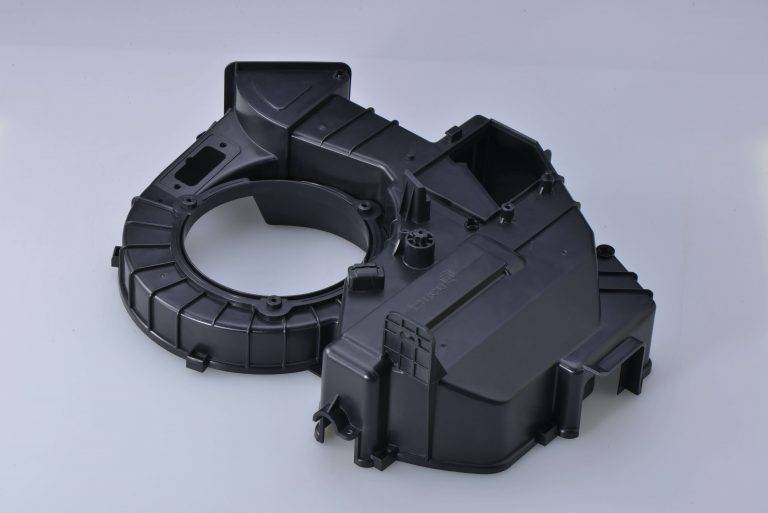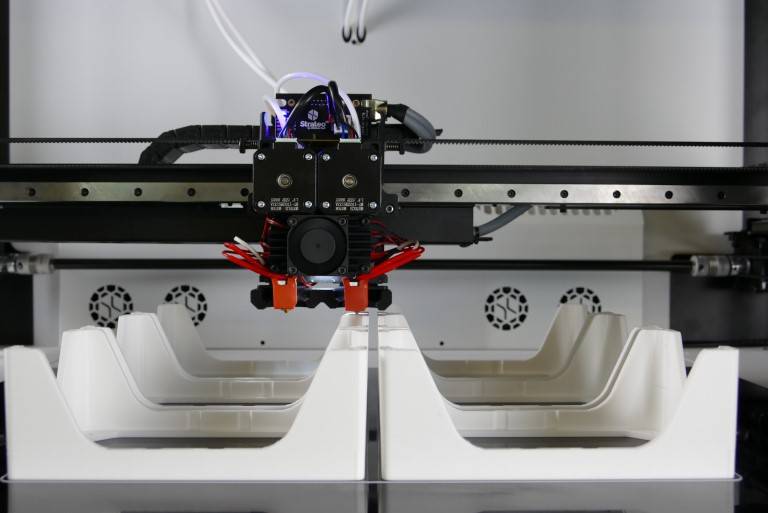With the rapid surge in Industry 4.0 trends, manufacturers are upgrading their production line with modern technologies. Among various advancements, injection molding and 3D printing are the most used methods. Both have their distinctive features, and if you’re confused about which one to choose, we’ve got you covered.
Injection Molding Vs 3D Printing: What’s The Difference?
The primary difference between an injection moulding machine and a 3D printer is that the former moulds molten plastics into the object’s shape to be created. On the other hand, the latter manufacturing technique prints them by melting plastic filament with a thermal head.
Injection Moulding
As the name suggests, injection molding involves injecting molten plastic into a cavity. Two mould halves create this cavity mounted on top of a cylindrical platen. The platen moves back and forth to clamp the hole shut between each shot while the other half opens up to let you insert the next part for fabrication. An elevator also moves these moulds up and down to space out components before entering the cavity.

Once everything is set, the machine runs an automatic cycle which begins with purging air from the system and heating the barrel to melt the polymer pellets. This process happens until it reaches its forming temperature at around 200-400°C (392-752°F). Next, the hot plastic gets injected into the cavity under high pressure, typically about 15,000 psi (100 MPa). As the polymer cools and hardens, the mould opens, and the part falls out. The cycle then repeats with a new material shot to make the next part.
3D Printing
Regardless of the type, 3D printers all work by layering a thin layer of molten material (usually plastic) and following this up with another one on top. Each new layer is placed precisely according to data from a 3D model, containing the design information. Next, plastic filament is melted using a heating element before being squeezed through an extrusion nozzle to make something more tangible.

The other method for getting your part out of the machine is sintering, especially when you’re working with metal-infused resin. This process spreads a thin layer over the entire surface. It then uses lasers or electron beams to selectively heat it into its liquid state so that it can pool together and form your object without any further support.
When To Use Injection Molding Service?
Injection moulding is the best method to go with if you want bulk parts that require high precision. It’s also more suitable for complex shapes and designs because 3D printers struggle with overhangs and undercuts. However, this doesn’t mean they can’t create elaborate objects – they need extra support during the process.
You can produce anything from water bottles and medical packaging to plastic caps and automotive components with an injection moulding machine. Injection moulding is widely used because it’s cost-effective and versatile but not as fast as 3D printing.
Injection Moulding Advantages:
Following are the benefits of injection moulding that you need to understand how it can empower your business:
Highly Efficient:
Plastic injection molding is a popular and most efficient high-volume production technique. Injection moulding helps you scale up your business with a minimal amount of effort.
High Volume:
It is a process that can work on high-volume production faster than other processes, including 3d printing. With the help of injection moulding, you can make hundreds and thousands of parts in a matter of seconds.
Great Strength:
Parts produced via injection moulding have an excellent strength property due to their moulded design. As a result, parts are widely used in industries where physical demands and durability are required.
Quick Turnarounds:
Since injection moulding doesn’t require post-processing, you get your parts much quicker than 3D printing. In addition, parts are ejected as soon as they’re ready, which saves you time in post-processing.
Reusable Moulds:
Unlike 3D printing, injection moulding makes use of reusable moulds. It means that you don’t have to create a new mould each time you produce a new batch of parts. Instead, you can reuse the same mould again.
When To Use 3D Printing Services?
Meanwhile, a 3D printer can easily make complicated parts with complex geometries, especially those with only a few layers. It’s also great for rapid prototyping designs that may need some fine-tuning before going into production. In addition to the initial materials cost saving compared to injection moulding, plastic filament is generally cheaper. However, 3D printers are slower, and you won’t create large objects without additional support structures.
3D printing is ideal for products that require many small parts, customized designs, and short production runs. It’s excellent for creating one-off prototypes and has found uses in medical implants, jewellery, eyewear, and car parts.
3D Printing Advantages:
Following are the significant advantages of additive manufacturing that help you drive more flexibility to your product lineup.
Flexible Design:
With 3D printing, you’re not limited to traditional manufacturing methods, and you can create any shapes or geometries that wouldn’t be possible with injection moulding.
Freedom Of Material Choice:
You’re not restricted to using just a few types of materials with 3D printing, as a wide range of metals and plastics is available. It also includes biodegradable materials such as starch, ideal for medical applications.
Reduced Lead Times:
Unlike injection molding, 3D printing doesn’t require any tooling changes or setup time so that you can go from design to finished product faster.
Multiple Part Fabrication:
With traditional manufacturing methods, it’s usually only possible to produce one part at a time. But with 3D printing, you can print several at once to speed up production.
On-Demand Manufacturing:
3D printing also enables you to produce small batches of customized products very quickly without large-scale investments. It makes it perfect for creating unique one-off items.
Which Is Right for You?
The best way to determine which process is suitable for you is to think about the kind of products you want to make. If you need identical bulk parts that are relatively simple in design, injection moulding is probably your best option. However, if you’re after something more complex or require a one-off prototype quickly, 3D printing is the way to go. Whichever route you choose, be sure to factor in the cost of materials and machines – it’s essential to make sure you’re making a profit on each product you produce.
Injection moulding will likely be the most economical option if you plan to grow your production at scale. However, if you want to produce only a few products and are looking for more customized designs, 3D printing is a better choice. With the ever-growing popularity of additive manufacturing, this technology will likely become even more accessible and affordable in the years to come. So, whatever your needs, there’s a process that can meet them.
Wrapping Up!
Injection molding is an excellent process for creating high-volume, low-cost parts with little or no manual intervention. It’s also suitable for manufacturing small to medium-sized components with intricate details.
On the other hand, 3D printing excels at fabricating one-offs or small batches of customized parts without expensive tooling. It’s also perfect for producing complex geometries that are difficult to create using traditional methods. Moreover, with the growing popularity of additive manufacturing, several companies now offer affordable 3d printing solutions in Melbourne, Sydney, and many other places.




Leave a Reply